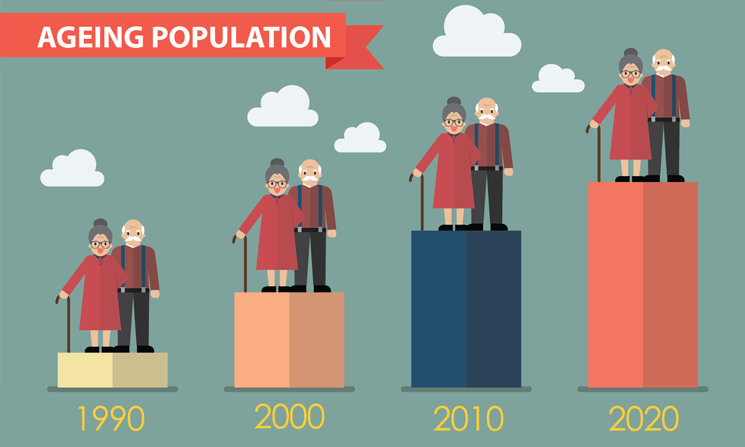The silver tsunami

Most of Asia is undergoing a rapid demographic transition which will see the average age increase as the proportion of its population made up of older citizens rises. However, ageing societies have been traditionally viewed negatively – with media outlets branding the phenomenon the ‘silver tsunami’.
One of the negative terms that has been used around ageing societies is the ‘old-age dependency ratio’, essentially the ratio of retired people that need to be supported by the younger working population.
“I particularly dislike the old-age dependency ratio,” said London Business School professor of economics and co-author of the book ‘The 100-Year Life: Living and Working in an Age of Longevity’ Andrew Scott. “It defines being old as 65 … and the notion that people over the age of 65 are dependant is a bit unpleasant, because at some point I was dependant on them, and not everyone under the age of 65 is actually earning.”
He said that it was critical to create a positive narrative around the topic and start to innovate as this is the first time the world has had to plan for 100-year lifespans. With people living healthier for longer, the old-age dependency ratio breaks down as people will be able to contribute many more productive years, instead of just retiring at 65.
About all of life, not just end of life
One crucial aspect of the longevity agenda is that it looks at all of life, and not just end of life. The change in the ageing process means that traditional thinking will not suffice when trying to plan a person’s life cycle.
“The three-stage life of education, career and then retirement cannot be easily stretched out to last 100 years,” said the report. “If we live a 100-year life using the same social norms and behaviours that worked for 70 years, it is unlikely to be a good long life.”
Adjusting to longer lives will require significant changes at an individual and societal level. “We need to redesign life and services,” said Professor Scott. “It changes our notion of careers and work dramatically because if you’re living to 100, you’re probably working until you’re 80.”
Healthcare hurdles
However, the elderly population faces myriad challenges as it grows old in developing markets that lack age-inclusive healthcare systems and insurance mechanisms. Poor access to clinics and hospitals, long distances from households to health services, prohibitive cost of services and a lack of awareness of health conditions of older people are some of issues faced by the elderly in developing countries amidst the lack of universal healthcare coverage and other health insurance mechanisms.
According to HelpAge International’s ‘Global AgeWatch’ insights report, progress in health for older people or the elderly ‘remains deeply unequal and often limited’ noting that they continue to suffer exclusion and face multiple challenges in accessing services despite existing universal protections recognised in the International Covenant on Economic, Social and Cultural Rights by the United Nations.
However, when it comes to finding out the proportion of the elderly utilising insurance as a tool to pay for and to access healthcare, the report states that it is not possible. This is due to the lack of age disaggregation in international datasets on expenditure or access to mandatory or voluntary health insurance.
This has led to insurers coming up with senior-citizen plans in the market that can be obtained without the need for a medical examination but come with certain terms and conditions such as compulsory co-pay and sub-limit on many procedures.
Developing countries in the region have also come up with elderly-specific insurance products such as ‘SUN Senior Care’ from SunLife Philippines, ‘Senior 50+’ from Muang Thai, ‘Senior Universal Life’ from Chubb Vietnam, Bajaj Allianz’s Silver Health plan for senior citizens, Tata AIG’s MediSenior and Apollo Munich’s OptimaSENIOR.
This spells an opportunity for insurers in developing Asian markets to cater to the growing elderly population. More innovative insurance products for senior citizen health care can be expected in the coming years.